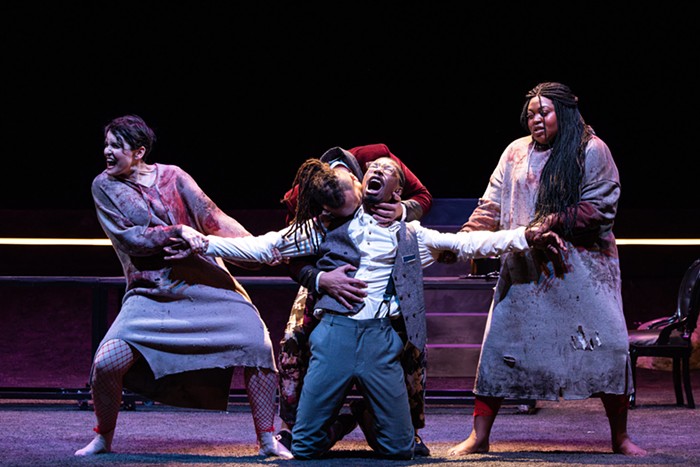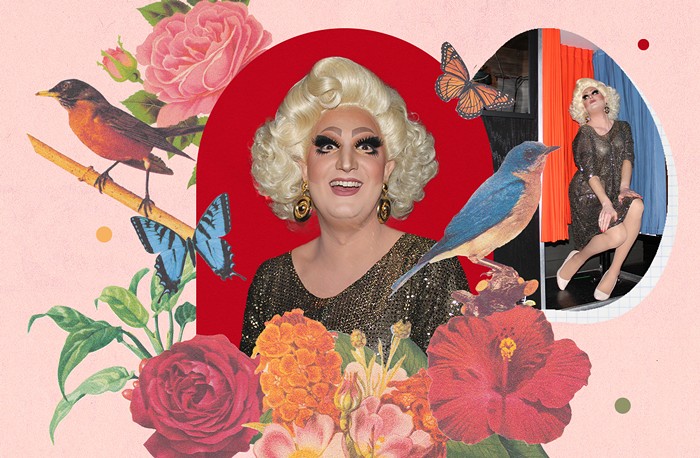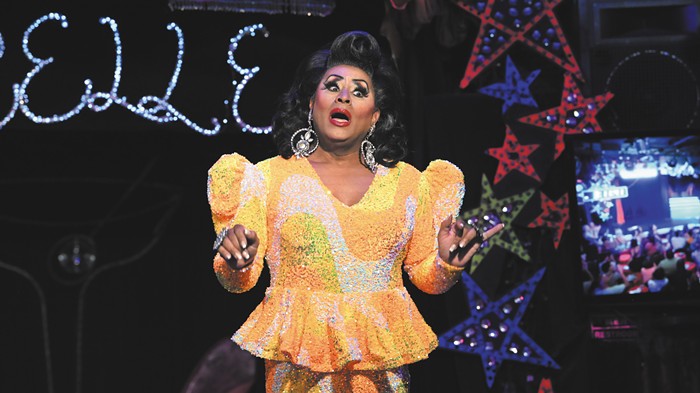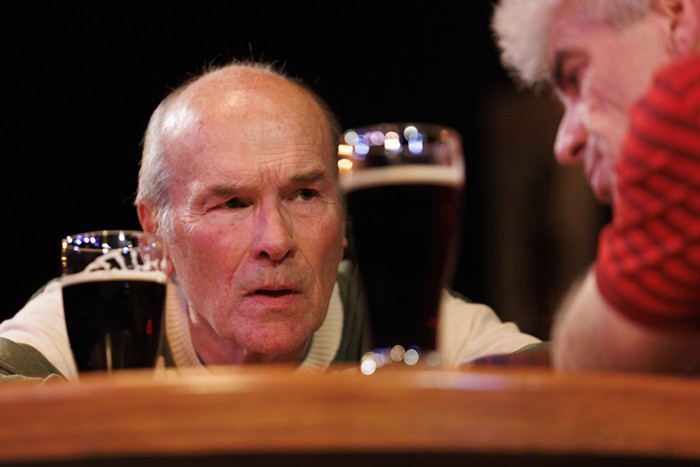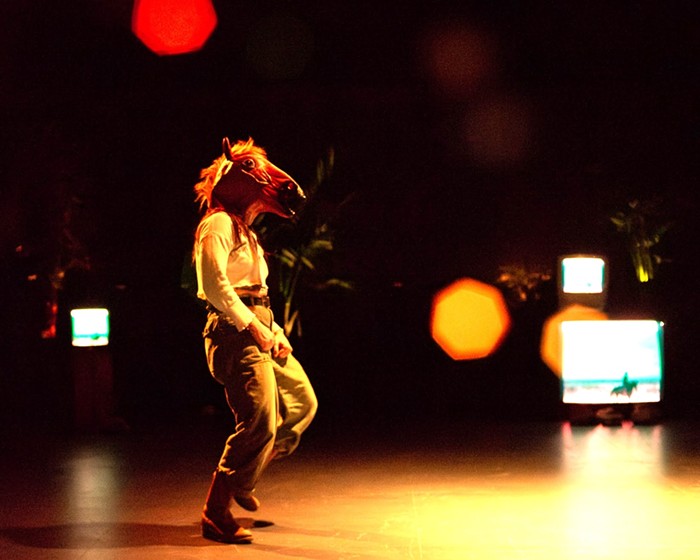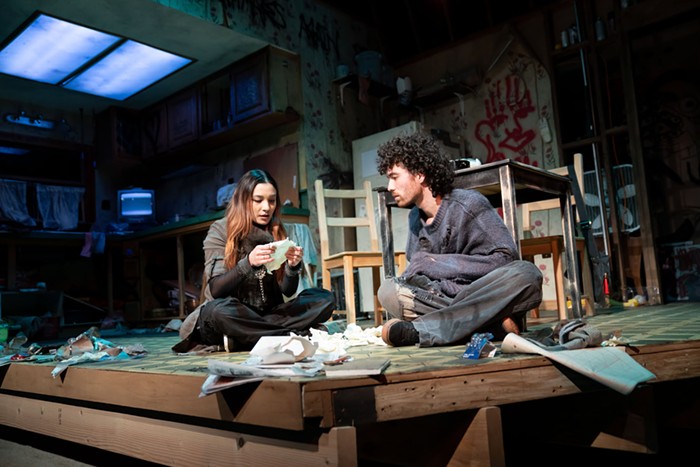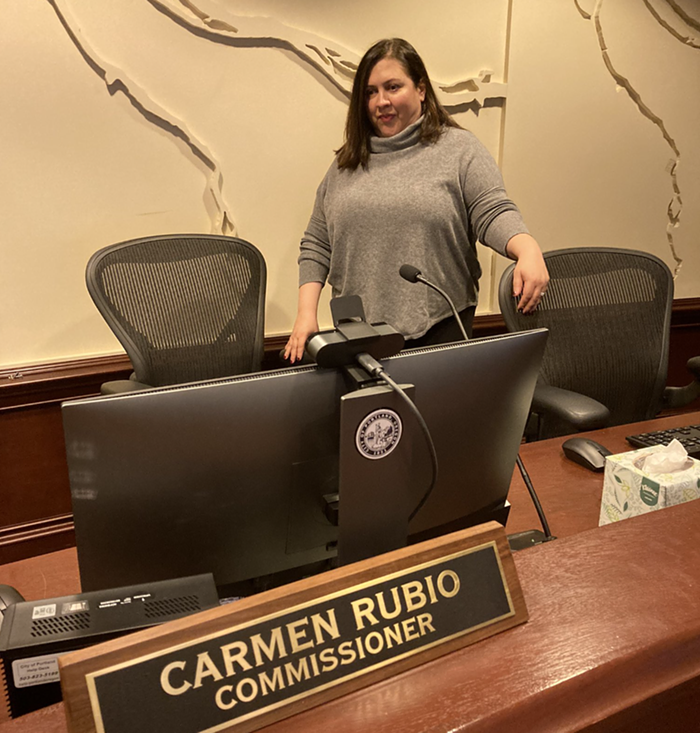
If you read the internet at all this past weekend, you probably saw Matt Novak's piece on Gizmodo, under the headline "Oregon Was Founded as a Racist Utopia." It's a comprehensive take on the racist policies and institutions that led to current racial dynamics in Oregon and the Pacific Northwest more widely, that relies heavily on the work of local poet, scholar, and educator Walidah Imarisha. I found Imarisha's quotes to be the real heart of the piece—smart, hugely informative, and just plain necessary—and having just seen a staged reading of Cottonwood in the Flood at this year's Fertile Ground festival (more on that soon), Novak's use of Vanport, Oregon, as a case study of Oregon's segregated history also stood out:
The segregation in Portland was as stark as anything in the Jim Crow-era South. And Portland's bizarre dearth of black people (bizarre to outsiders who were unaware of the climate) really came to a head during World War II, when an influx of black workers came looking for the plentiful jobs offered by the Kaiser Shipyards.
"Portland was called the most segregated city north of the Mason-Dixon line," Imarisha tells me. "And so the question became where would these [newly arrived black workers] go? Suddenly you have tens of thousands of black folks pouring in when in Portland there was only one tiny neighborhood called the Albina neighborhood that was already overfull with about 2,500 black folks."
The company worked with the city to create Vanport, an enormous new housing development halfway between Vancouver, Washington and Portland — thus the name Vanport.
"At its height there was 100,000 people there and it was 40 percent black, which for anything to be 40 percent black in Oregon was astounding, Imarisha explains. "Vanport was built incredibly shoddily because it was never meant to last...In fact the housing authority in Portland called it a blight and wanted Vanport obliterated. And in 1948 they got their wish when Vanport was completely flooded"... Amazingly, the flooding actually started modestly and people had time to leave. But Portland officials insisted that there was nothing to worry about when the first cracks started letting water into the community.
"Remember: Dikes are safe at present," a bulletin from the Portland Housing Authority read on May 30, 1948. "You will be warned if necessary. You will have time to leave. Don't get excited."
So that last statement—you know, ending in the horribly condescending "Don't get excited"—that statement appears verbatim in Cottonwood in the Flood. Written by Rich Rubin, and directed by Damaris Webb for Fertile Ground, Cottonwood in the Flood is an entire play about the rise and fall of that very same Vanport, as told through the experiences of an African-American family who move to Vanport seeking its promise of higher wages—and an alternative to Jim Crow-dominated Selma, Alabama. In other words, it couldn't be more timely.
Cottonwood in the Flood is rooted in Oregon's not-too-distant past, but puts faces and names and stories to an appalling, almost Biblical moment of injustice in the state's history. One of the persistent problems that perpetuate damaging cultural dynamics Imarisha points to in the Gizmodo article is a simple lack of awareness of this difficult history, and one of the best ways to mitigate that ignorance is to see a play just like Cottonwood in the Flood—because it provides real insight into the historical events it depicts, by setting it up on two levels: the looming, macro view of history, refracted through the lens of its characters, and all of their particularities.
This is a delicate balance, and Rubin handles it effectively. At the staged reading I went to over the weekend at Performance Works Northwest, the through-lines in Rubin's play were imbued with real emotional power by the actors—Anthony Armstrong, Jeb Berrier, Joe Gibson, Wrick Jones, Kristen Lang, S. Renee Mitchell, Seth Rue, Jocelyn Seid, and Shelley B. Shelley under the direction of Damaris Webb. The play is nicely structured, with a repeated symbol—the cottonwood tree—showing up in the script as, variously, a threat of violence in the South under Jim Crow, a symbol of segregation in World War II-era Oregon, and, finally, surprisingly, as an image of resilience amid terrible odds. Rubin does go for an easy cliché now and again, but that's simple enough to fix, especially given that the reason these moments stand out is because the rest of the play is otherwise so carefully crafted.
Under Webb's excellent direction, and with this particular cast, it was easy to envision this version of Cottonwood in the Flood fully produced at a theater like Portland Playhouse or Artists Rep. If I were a local producer with one of Portland's theaters, I would go for this play posthaste, with this director and this cast, before someone else does. It's full of strong performances and covers a piece of Oregon history that's rarely seen. It's got that very particular quality so often crowed about in art, so rarely actually seen: capital-I importance. And if Cottonwood in the Flood can achieve this much intensity without even having its actors off-book, I can only imagine the heights it could reach if given the chance.
